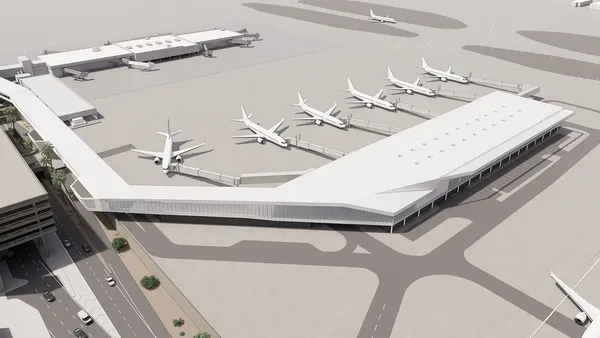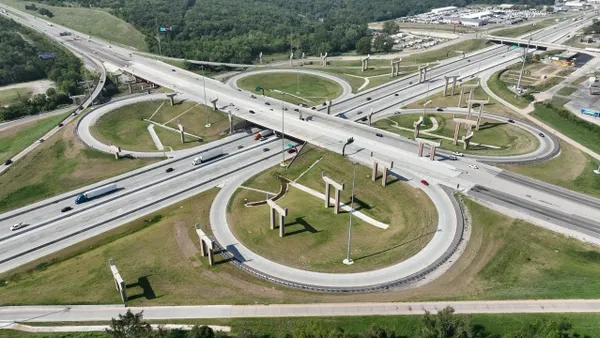Dive Brief:
- The California Department of Transportation has awarded a $1 million emergency contract to Sacramento-based Teichert for initial safety and stabilization work on a washout that shut down a section of iconic Highway 1 near Big Sur last weekend. A Caltrans spokesperson said the initial funding amount is likely to increase to account for the first phase of site stabilization.
- After being pounded by up to 2 inches of rain per hour on Friday, a portion of the southbound lane high above the Pacific Ocean gave way Saturday, leaving a vehicle-sized chunk missing from the road’s outer edge. Caltrans closed the route, and at least 1,600 people were temporarily stranded in the area as engineers assessed the situation.
- “We’re looking at in-situ stabilization at this point,” said Kevin Drabinski, Caltrans spokesperson, about monitoring and evaluation of what the agency referred to as the Rocky Creek “slip out,” or an area where the ground underneath a roadway falls from below, similar to a sinkhole. “Our focus is to shore up the edge of that roadway and keep it from heading in a bad direction.”
Dive Insight:
Thus far, crews have set up cones and put measures in place to monitor the safety of the roadway, with plans to erect 500 feet of more permanent concrete barriers — so-called K-rail — down the centerline. Monitoring shows the roadway is stable, Caltrans said, with travel still possible on the inside lane.
On Sunday, Caltrans started running twice-daily convoys of vehicles on the inside lane, nearest the hillside, to allow travelers to transit the area which is near the Rocky Creek Bridge about 17 miles south of Monterey. But those convoys have been canceled for Thursday and Friday, with more rain forecast for the area. Convoys are scheduled to resume Saturday, if the roadway is still deemed safe.
“We’re monitoring the situation very closely,” said Drabinski. “We'll be there during the rains to monitor for any change in conditions of the repair site because when you have a slip out, rain is not the thing that you order to make it better.”
Geotechnical specialists were deployed to the area Wednesday to continue their assessments, which will inform any more permanent repair plans, Drabinski said. Future scope of work would likely extend beyond just the affected portion of roadway to utilize more stable, secure ground north and south of the slip.
“This is at a location where the runoff is one way, the slope of the mountain above it is another way and the dropoff to the ocean is something else,” Drabinski said. He said the agency would rely on past experiences with similar slip outs to develop a solution for this specific site and that permanent work would likely be covered under a separate contract.
Past slides
It’s not the only section of the famous route, which is known as the Pacific Coast Highway in Southern California and hugs the rugged California coast all the way to Oregon, to experience slides and closures, some of which have taken more than a year to clear.
For example, in addition to work at Dolan Point Slide south of the current slip out, Caltrans is also still working on Paul’s Slide, which has shut a section of the highway south of Lucia since it occurred in December 2022. Work there is expected to be complete this spring. According to the San Luis Obispo Tribune, a total of seven slides have closed more than 40 miles of the highway in the area.
For the slip out that occurred Saturday, Caltrans doesn’t yet have an estimate on the cost or duration of a more permanent repair.
After storms ravaged the California coast in December 2022 and January 2023, the state awarded more than $100 million in emergency repair work to Watsonville, California-based Granite Construction, along with other contractors.















